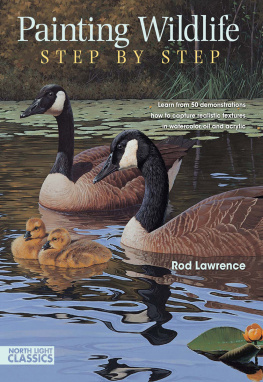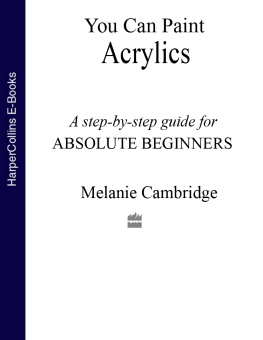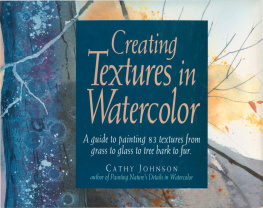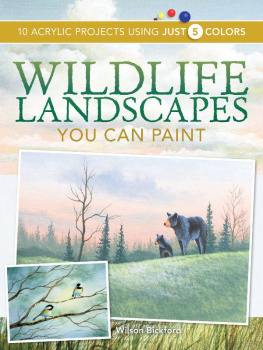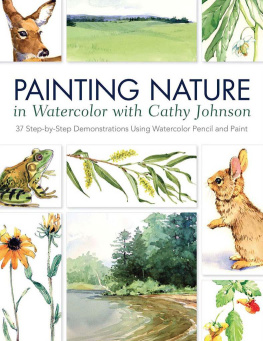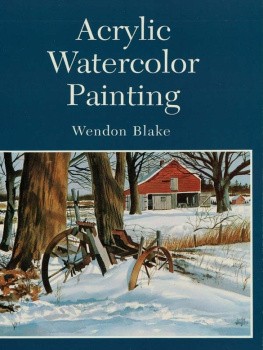Painting Wildlife
STEP BY STEP
Learn from 50 demonstrations how to capture realistic
textures in watercolor, oil, and acrylic
Rod Lawrence

Painting Wildlife Step by Step. Original edition 1997 by Rod Lawrence; revised edition 2011 by Rod Lawrence. Manufactured in China. All rights reserved. No part of this book may be reproduced in any form or by any electronic or mechanical means including information storage and retrieval systems without permission in writing from the publisher, except by a reviewer who may quote brief passages in a review. Published by North Light Books, an imprint of F+W Media, Inc., 4700 East Galbraith Road, Cincinnati, Ohio, 45236. (800) 289-0963. Originally published as Painting Wildlife Textures Step by Step.

Other fine North Light Books are available from your local bookstore, art supply store or online supplier. Visit us at our website at www.fwmedia.com.
15 14 13 12 11 5 4 3 2 1
DISTRIBUTED IN CANADA BY FRASER DIRECT
100 Armstrong Avenue
Georgetown, ON, Canada L7G 5S4
Tel: (905) 877-4411
DISTRIBUTED IN THE U.K. AND EUROPE BY F+W MEDIA INTERNATIONAL
Brunel House, Newton Abbot, Devon, TQ12 4PU, England
Tel: (+44) 1626 323200, Fax: (+44) 1626 323319
Email: postmaster@davidandcharles.co.uk
DISTRIBUTED IN AUSTRALIA BY CAPRICORN LINK
P.O. Box 704, S. Windsor NSW, 2756 Australia
Tel: (02) 4577-3555
Library of Congress Cataloging-in-Publication Data
Lawrence, Rod.
Painting wildlife step by step : learn from 50 demonstrations how to capture realistic textures in watercolor, oil, and acrylic / by Rod Lawrence. Rev. ed.
p. cm.
Rev. ed. of: Painting wildlife textures step by step.1997.
Includes index.
ISBN 978-1-4403-0389-0 (pbk. : alk. paper)
eISBN 13: 978-1-4403-1026-3
1. Wildlife painting Technique. 2. Texture (Art) Technique. I. Lawrence, Rod. Painting wildlife textures step by step. II. Title. III. Title: Learn from 50 demonstrations how to capture realistic textures in watercolor, oil, and acrylic. IV. Title: Learn from fifty demonstrations how to capture realistic textures in watercolor, oil, and acrylic.
ND1380.L38 2011
751.4 dc22
2010033823
Edited by Jacqueline Musser and Holly Davis
Designed by Guy Kelly
Production coordinated by Mark Griffin
Metric Conversion Chart
To convert | to | multiply by |
Inches | Centimeters | 2.54 |
Centimeters | Inches | 0.4 |
Feet | Centimeters | 30.5 |
Centimeters | Feet | 0.03 |
Yards | Meters | 0.9 |
Meters | Yards | 1.1 |
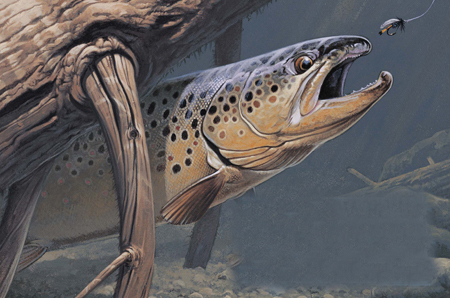
Brown Trout (1995 Michigan Trout Stamp)
(Brown Trout) Acrylic, 7 9 (18cm 25cm), Private collection
About the Author
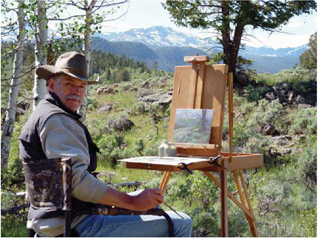
Rod Lawrence graduated with a fine arts degree, magna cum laude, from the University of Michigan in 1973. Since then he has been working full-time as a professional artist. His credits include being named the Michigan Ducks Unlimited Artist of the Year in 1979 and the Michigan United Conservation Clubs' Michigan Wildlife Artist of the Year in 1981. He created the winning designs for the 1981, 1987 and 1992 Michigan Trout Stamps, and he had an unprecedented double win for both the 1995 Michigan Duck Stamp and 1995 Michigan Trout Stamp. He also won the 1983, 1990, 2000, 2002 and 2007 Michigan Duck Stamp design contests. He is a Signature Member of the Society of Animal Artists.
Lawrence has exhibited in many group and one-man shows, including the prestigious Leigh Yawkey Woodson Art Museum's Birds in Art and Wildlife: The Artist's View, Bennington Center for the Arts' Art of the Animal Kingdom and the Society of Animal Artists annual show. His art has appeared as covers and illustrations, and has been featured in many outdoor magazines. Three sets of limited edition collector plates also feature his work. He's an active instructor for artists' workshops. In addition to Painting Wildlife Step by Step, he's also the author of Wildlife Painting Basics: Waterfowl & Wading Birds (North Light Books, 2000) and Animals (Walter Foster, 2009).
Lawrence and his family live in a log cabin in the hardwoods of northern Michigan, overlooking the North branch of the Manistee River. The symbol preceding his signature on each of his paintings shows the importance of his family in his work; the oddly shaped S stands for his wife Susan (an accomplished basket weaver and instructor), and the M and B represent their sons, Matthew and Brett.
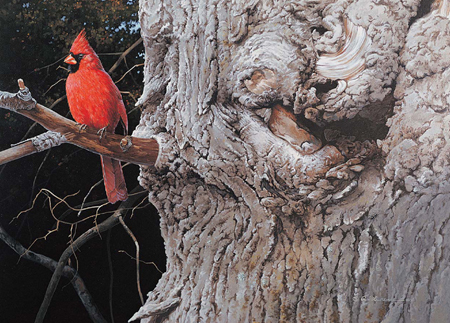
Beauty and the Beast
(Northern Cardinal - male) Acrylic, 16 22 (41cm 56cm), Private collection
Dedicated to my father, Philip, the artist who started it all, and my mother, Barbara; to my two sisters, Cathy and Debra, who share in our inherited artistic gifts; and especially to my wife, Susan, and our sons, Matthew and Brett. Their love, inspiration, encouragement, support and understanding have been lifelong and total. They are what make my life and my art possible.
Introduction

Misty Morning (Hooded Mergansers) Gouache, 22 26 (57cm 66cm) Private collection
This book is intended to be a helpful aid to wildlife artists. I've tried to convey all that I can in the confines of each page to show how I approach painting different wildlife textures. Although I used several different paint media for my demonstrations, I prefer acrylics and, therefore, used them for many of the paintings. Keep in mind that the painting examples show my approach and may not be indicative of how you would paint. Each artist has his or her own methods, and these contribute to an artist's individual style. Thank heaven there isn't just one correct way to paint!
I consider my painting style to be detailed and representational; however, that doesn't alter my appreciation of other forms of art. I encourage everyone who likes art to cultivate their appreciation and broaden their education. There's much to be learned from art in all its rich and varied forms. Although it's not my style, I'm constantly impressed and inspired by artists who paint broadly and loosely. I love to read and study books on art; I learn a great deal from them and use them for inspiration. I hope that, regardless of your interest as an artist or as one who appreciates art you'll enjoy this book and find something of value to you. May it increase your interest in all art and the wildlife world that surrounds us.
Materials
I believe in using the best materials for the best results. That doesn't necessarily mean using the most expensive ones but simply the material or tool that will best achieve the results you want. This way of thinking encompasses all aspects of my artwork, from drawing and painting to the final step of matting and framing. Why limit your creative abilities by using materials that either make you work too hard or curb your creativity because of their shortcomings? For example, if you need to paint a thin, precise line, why use an old, worn out brush that no longer holds a good point when a new brush will make the task so much easier? Let your materials help, not hinder, your creative process. However, keep trying innovative ways to use your materials, both old and new. That's how you can achieve exciting results and find methods to build on.

